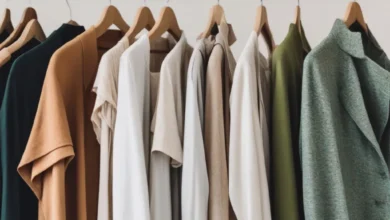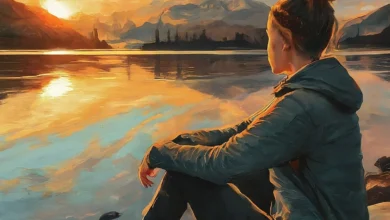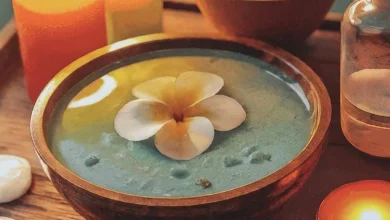A Beginner’s Guide to Meditation: Techniques for Everyday Calm

Introduction
Do you ever feel like your mind is a busy highway at rush hour? You’re not alone. In our fast-paced world, finding peace can seem tough. But what if I told you that calm is within reach?
Enter meditation – your personal oasis of tranquility. Here’s an interesting fact: the number of U.S. adults practicing meditation more than tripled from 2012 to 2017. This isn’t just a passing trend. People are finding that this ancient practice can help them navigate modern life.
In this beginner’s guide, we’ll explore:
- Simple meditation techniques
- Ways to find everyday calm
- How to start, even with a busy schedule
Ready to begin your journey to a calmer mind? Let’s dive in!
What is Meditation?
Meditation is like a gym workout for your mind. It’s a way to train your attention and awareness. When you meditate, you focus your mind on one thing, like your breath or a word.
Here’s a quick look at meditation:
- History: People have been meditating for thousands of years. It started in ancient cultures but is now popular worldwide.
- Cultural significance: Many religions use meditation, but you don’t need to be religious to do it.
- How it works: Meditation can change your brain. It’s like a mental exercise that helps you:
- Calm your thoughts
- Manage stress better
- Improve focus
Think of meditation as a pause button for your busy life. It gives your mind a chance to rest and reset.
Benefits of Regular Meditation Practice
Meditation isn’t just about sitting quietly. It can bring real, positive changes to your life. Let’s look at some of the benefits that regular meditation can offer:
Physical Benefits:
- Lowers stress levels
- Reduces blood pressure
- Improves sleep quality
- Boosts immune system
Mental Benefits:
- Sharpens focus and concentration
- Enhances emotional regulation
- Increases self-awareness
- Reduces anxiety and depression symptoms
Scientific Support:
Research backs up these benefits. For example:
- A 2014 study found that mindfulness meditation can help reduce anxiety and depression.
- Another study showed that regular meditation can lower blood pressure in people with hypertension.
Remember, you don’t need to meditate for hours to see results. Even a few minutes a day can make a difference!
Common Misconceptions About Meditation
Many people have ideas about meditation that aren’t quite right. Let’s clear up some of these myths:
“Meditation is only for spiritual people”
- Reality: Meditation is for everyone! You don’t need to be spiritual or religious to benefit from it.
“You need to sit for hours to meditate”
- Reality: Even 5-10 minutes can be effective. Start small and build up over time.
“You must clear your mind completely”
- Reality: It’s normal for thoughts to come and go. The goal is to notice them without getting caught up in them.
“Meditation is complicated”
- Reality: It can be as simple as focusing on your breath. No special skills required!
“You need special equipment or a quiet retreat”
- Reality: You can meditate anywhere – at home, on the bus, or even at your desk.
Remember, meditation is a skill that anyone can learn. It’s not about being perfect; it’s about practice.
Getting Started: Creating Your Meditation Space

Having a dedicated space for meditation can help you build a consistent practice. Here’s how to create your own meditation corner:
Choose a Quiet Spot
- Find a place where you won’t be disturbed
- It could be a corner of your bedroom, a spare room, or even a quiet outdoor space
Keep It Comfortable
- Use a cushion, chair, or mat that supports good posture
- Ensure the temperature is pleasant
Enhance the Atmosphere
- Consider adding:
- Soft lighting or candles
- A small plant
- A cozy blanket
Minimize Distractions
- Turn off your phone notifications
- Clear clutter from your meditation area
Be Consistent
- Try to meditate at the same time and place each day
- This helps build a habit and signals your brain it’s time to relax
Remember, your space doesn’t need to be perfect. The most important thing is that it feels comfortable and inviting to you.
Basic Meditation Techniques for Beginners
Here are four simple techniques to help you start your meditation journey:
1. Mindful Breathing
This is a great technique for beginners:
- Sit comfortably and close your eyes
- Focus on your breath as it moves in and out
- When your mind wanders, gently bring it back to your breath
- Start with 5 minutes and gradually increase
Benefits: Improves focus and reduces stress
2. Body Scan Meditation
This helps you become aware of your body:
- Lie down or sit comfortably
- Focus on each part of your body, from toes to head
- Notice any sensations without judgment
- Spend about 30 seconds on each body part
Benefits: Promotes relaxation and body awareness
3. Loving-Kindness Meditation
This practice cultivates positive feelings:
- Think of someone you care about
- Silently repeat phrases like “May you be happy, may you be healthy”
- Extend these wishes to yourself and others
- Practice for 5-10 minutes
Benefits: Increases empathy and positive emotions
4. Guided Meditation
Perfect for those who prefer step-by-step instructions:
- Use apps like Headspace or Calm
- Follow along with YouTube videos
- Listen to guided meditation podcasts
Benefits: Provides structure and variety for beginners
Remember, there’s no “perfect” way to meditate. Find what works best for you!
Tips for Establishing a Regular Meditation Practice
Creating a consistent meditation habit can be challenging, but these tips will help:
Start Small
- Begin with just 5 minutes a day
- Gradually increase your time as you get comfortable
Be Consistent
- Try to meditate at the same time each day
- Consistency is more important than duration
Track Your Progress
- Use a journal or app to log your sessions
- Note how you feel before and after meditating
Set Realistic Goals
- Aim for short, daily sessions rather than long, infrequent ones
- Celebrate small wins to stay motivated
Deal with Common Challenges
- Mind wandering? Gently bring your focus back
- Busy schedule? Try meditating during your commute or lunch break
Be Kind to Yourself
- Don’t judge yourself if you miss a day
- Remember, every moment is a fresh start
Join a Group or Use an App
- Community support can boost motivation
- Apps like Headspace or Insight Timer offer guided sessions
Remember, building any new habit takes time. Be patient with yourself as you develop your practice.
Incorporating Meditation into Daily Life
Meditation isn’t just for quiet rooms and cushions. You can bring its benefits into your everyday activities:
Mindful Moments
- Take three deep breaths before starting a task
- Pay full attention when eating or drinking
- Notice the sensation of water on your skin while showering
Brief Meditations for Busy Schedules
- Practice 1-minute breathing exercises between meetings
- Do a quick body scan while waiting in line
- Use your commute time for a short guided meditation
Stress Relief in Real-Time
- When stressed, pause and take five deep breaths
- Use the STOP method:
- Stop what you’re doing
- Take a breath
- Observe your thoughts and feelings
- Proceed mindfully
Mindful Walking
- Focus on each step as you walk
- Notice the movement of your body and your surroundings
Bedtime Wind-Down
- Do a short body scan or breathing exercise before sleep
- Practice gratitude by thinking of three good things from your day
Remember, the goal is to bring awareness to your daily life. Even small moments of mindfulness can make a big difference!
Advanced Techniques to Explore
As you grow more comfortable with meditation, you might want to try some advanced practices. Here’s a brief introduction to a few:
Transcendental Meditation (TM)
- Uses a personalized mantra
- Practiced for 20 minutes, twice a day
- Aims to achieve a state of relaxed awareness
Vipassana Meditation
- Focuses on deep self-observation
- Often taught in 10-day silent retreats
- Helps develop insight into the nature of reality
Zen Meditation (Zazen)
- Involves specific postures and breathing techniques
- Aims to empty the mind and just ‘be’
- Often practiced in Zen Buddhism
Chakra Meditation
- Focuses on energy centers in the body
- Uses visualization and specific breathing techniques
- Aims to balance physical and emotional energy
Kundalini Meditation
- Combines breathing, movement, and mantras
- Aims to awaken ‘kundalini’ energy at the base of the spine
- Can be physically and mentally intense
Remember, these techniques often require guidance from an experienced teacher. As you explore, choose practices that resonate with you and support your well-being.
Conclusion
Congratulations! You’ve just taken your first steps on an exciting journey into the world of meditation. Let’s recap what we’ve covered:
- Meditation is a simple yet powerful tool for managing stress and improving well-being.
- It offers numerous benefits for both your body and mind.
- There are many easy techniques to try, from mindful breathing to loving-kindness meditation.
- Creating a regular practice can be as simple as starting with a few minutes each day.
- You can incorporate mindfulness into your daily activities for ongoing calm.
Remember, there’s no “right” way to meditate. It’s a personal journey, and what works best for you might be different from others. The key is to start small, be consistent, and most importantly, be kind to yourself as you learn.
Whether you’re looking to reduce stress, improve focus, or simply find a moment of peace in your busy day, meditation has something to offer. So why not give it a try? Your calmer, more centered self is waiting to emerge.
Happy meditating!



